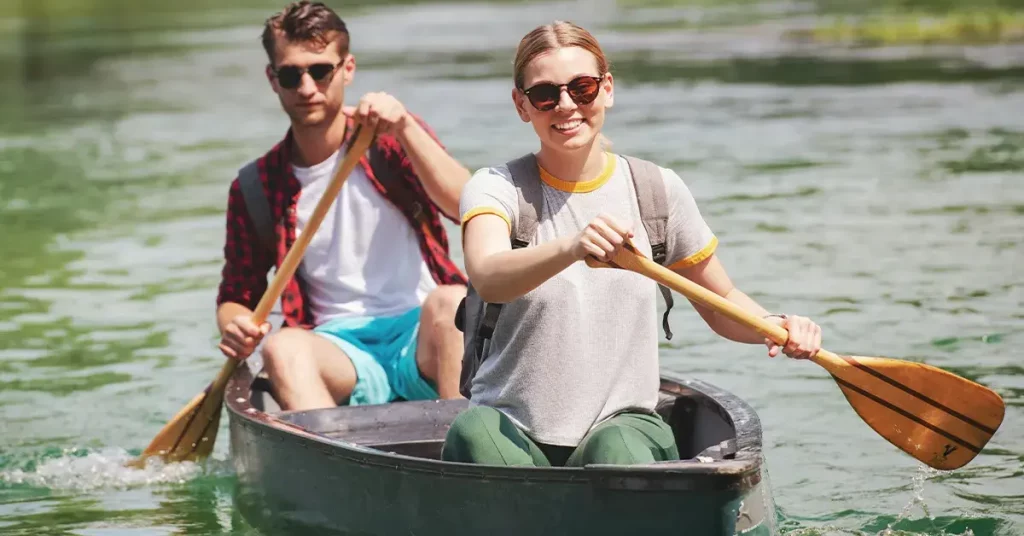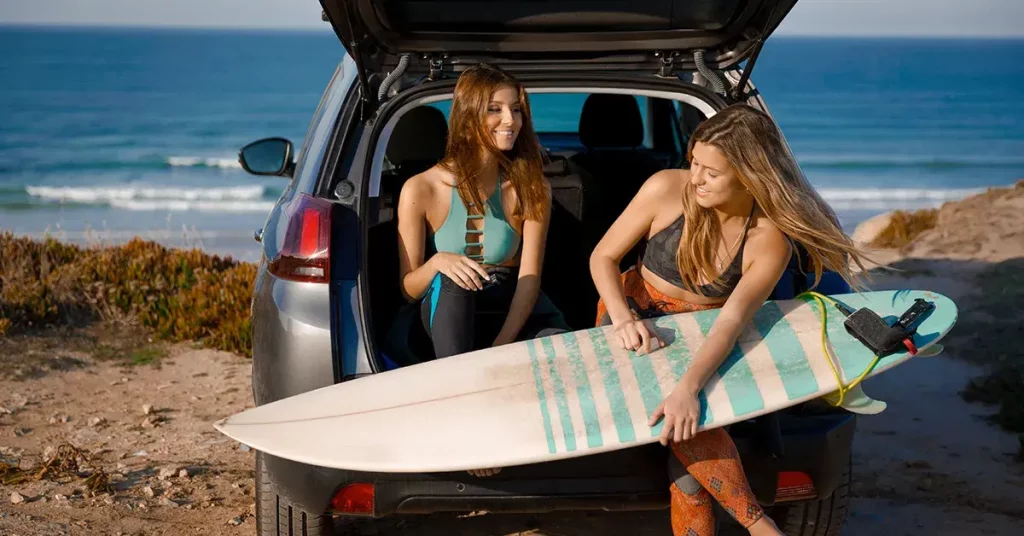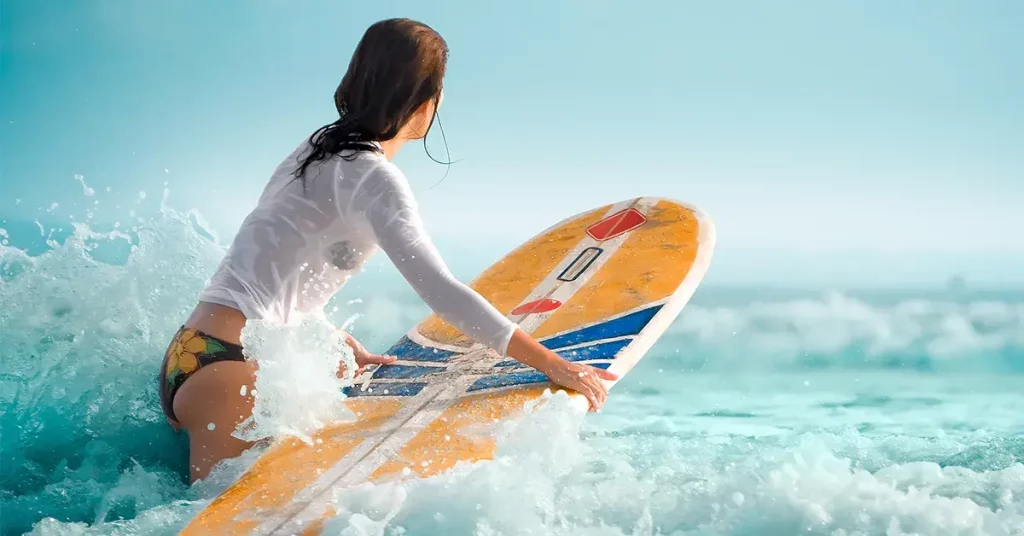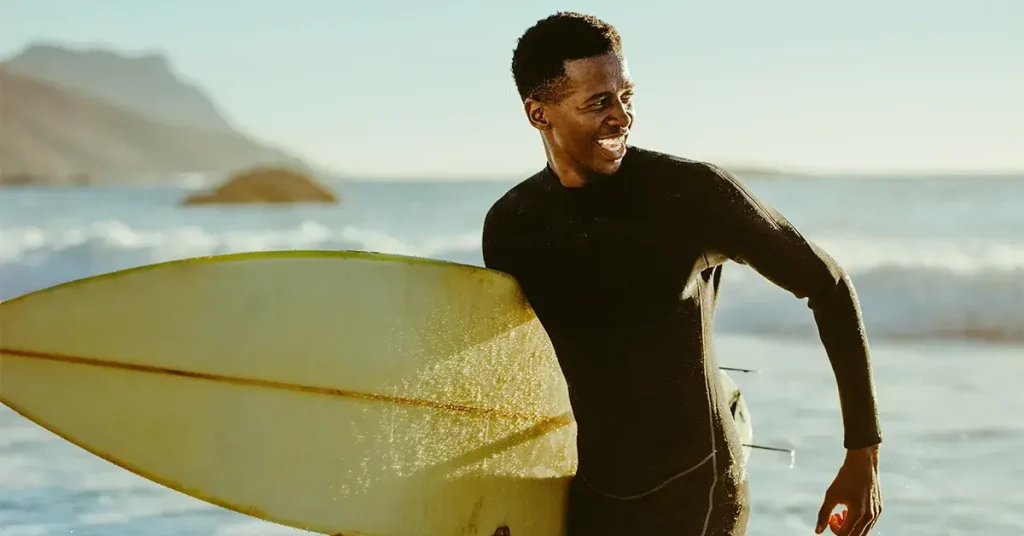Canoeing through pristine waters is not only one of the best ways to clear your head and enjoy the majesty of nature – but its also great exercise for your body. Paddling works a wide variety of muscles throughout the body, and has even been shown to improve your mental well-being!
Anyone who has spent a significant amount of time canoeing will tell you how great exercise it is. Your arms, back, and core take a real beating during paddling – while your lower body gets a serious workout during portages overland.
I’ll break down the various muscles used while canoeing, as well as how to train them effectively so you can keep paddling injury-free for many years to come.
Is Canoeing Good Exercise?
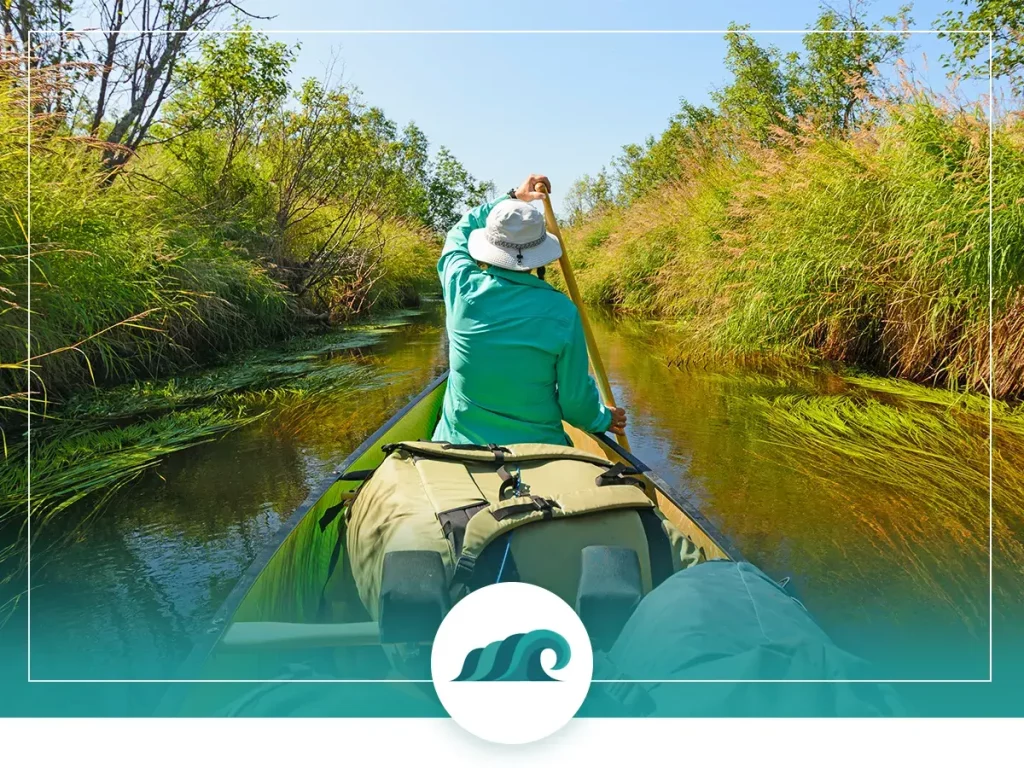
While some bro-science aficionados might tell you otherwise – canoeing is actually one of the best full-body exercises on the planet.
To the untrained eye, it might look like you’re only working your arms and back, but in reality, you’ll be using everything from head to toe during canoe outings.
You’ll also be able to set the level of the ‘workout’ to your personal preference.
If you prefer a leisurely paddle through calm waters – then you shall have it. On the other hand, if you want to push yourself physically, try a multi-day canoeing trip or full-on sprints in open water!
Muscles Used While Canoeing
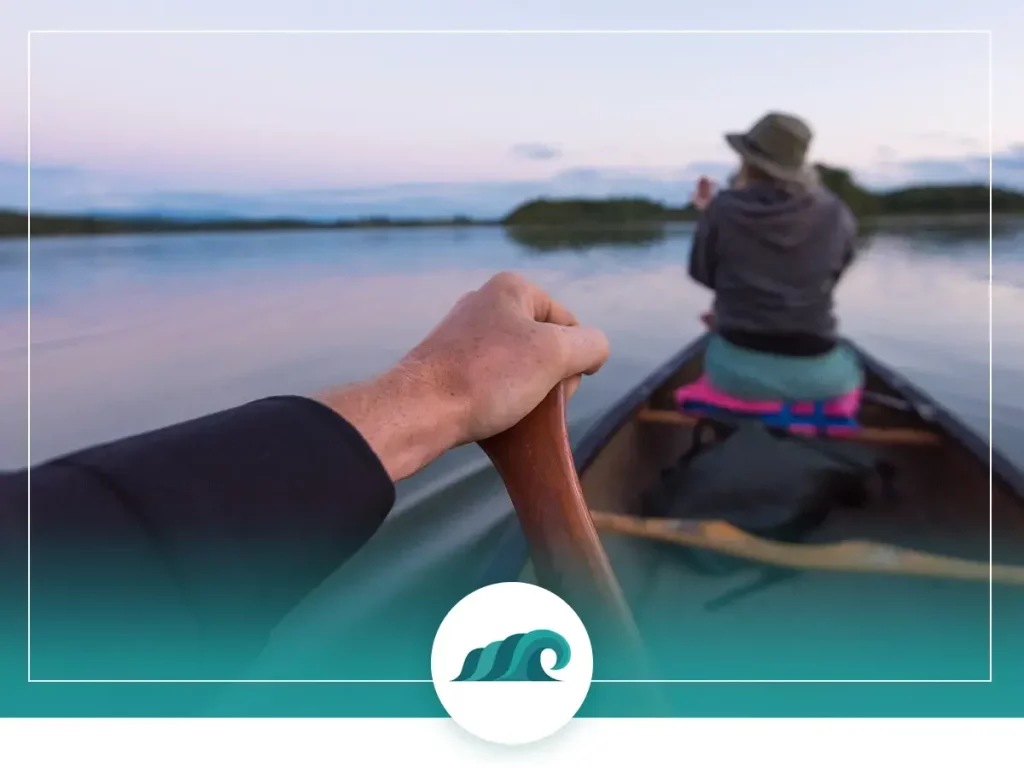
There are few activities that hit as many different muscle groups as canoeing. You’ll hit nearly every part of your body – from your back, arms, and core to your legs and cardiovascular system.
Canoeing is also an incredible calorie burner. During a multi-day canoeing trip, you can burn between 4000 to 6000 calories each day. That’s a boatload more than hitting the treadmill or weights at the gym.
Back
The large muscles of the back are one of the primary drivers during each canoe forward stroke. This includes the lats, trapezius, spinal erectors, and the small but important rhomboids.
The Lats (Latissimus dorsi) are the wide ‘v-shaped’ muscles that taper along your back. They drive each forward stroke and are one of the widest muscles in the body. Swimmers typically have highly developed lat muscles, and they can be developed in the gym using pull-ups, lat pulldowns, chin-ups, and rows.
The Spinal Erectors (erector spinae) are actually a group of muscles and tendons that runs along the length of the spine, from the pelvis up to the base of the skull. These muscles are responsible for keeping your spine and lower back aligned during paddling – so it’s important to keep them strong to avoid injury. Some exercises you can do to strengthen the spinal erectors are deadlifts, back extensions, and glute bridges.
The Traps (Trapezius) is the large triangular muscle that helps with scapular retraction and is responsible for the ‘shrug’ motion. This muscle consists of three parts: the upper, middle, and lower traps. Exercises you can perform to train your traps are dumbbell or barbell shrugs, hang cleans, and rack pulls.
Last but not least, the Rhomboids are small rhombus-shaped muscles used to pull your shoulder blades together. They also aid in scapular rotation and provide stability for your shoulders. Keeping these muscles healthy is one of the keys to avoiding back, neck, and shoulder pain later on down the line.
When performing a forward stroke, the first you’ll want to do is relax your body and go with the flow. You want everything to be fairly loose other than the muscles that are actively performing the stroke. This enables a more efficient paddle stroke and ensures you don’t waste precious energy.
Shoulders
Tying in closely with the back, the shoulders are another primary driver for each paddle stroke. This is especially true for the posterior (rear) deltoids as they pull the paddle blade alongside the hull during each forward stroke. The front deltoids are also involved in stabilizing the top of your paddle with your upper hand.
Like other paddling sports, canoeing can cause your posterior deltoids to overdevelop in relation to your middle and forward deltoids. Training and stretching these muscles specifically will help to ensure you balance out any potential muscular imbalance.
Biceps & Triceps
While they’re by no means the primary movers in a canoe stroke, the biceps and triceps are involved as stabilizers and secondary movers. When your canoe stroke is properly dialed in, you should feel fatigued in your back and shoulders far before your arms give out. If it’s the other way around, you’re using too much arm power.
During a forward stroke the lower arm’s biceps contract to pull the paddle blade towards your body, while your upper arm’s triceps work to push the paddle grip forwards. Then when you switch sides, the muscles worked swap sides as well.
Core
To the casual observer, it might not look like your core is getting much of a workout – this couldn’t be further from the truth. Your core is where the real power of your forward stroke is generated.
The rotational force generated from rotating your trunk drives the paddling motion. Try paddling all day long and see how sore your abs and obliques are the following day!
Your core also acts as a stabilizer for your spine during paddling. Keep in mind the ‘core’ includes all the muscles in your abs, obliques, as well as the spinal erectors in the lower back. When these muscles are strong and healthy, they all work synergistically to keep your spine healthy and prevent injury from occurring.
Chest
Now this one may surprise some people, but the chest gets a pretty thorough workout during paddling. While its certainly true that paddling is a back-dominant sport, the chest works as a stabilizer and as a secondary mover to push your paddle grip forwards with your upper hand.
The chest is also involved in a number of secondary canoe paddle strokes, including correction strokes like the rudder/pry stroke, and the J-stroke.
Cardio
Paddling also provides an excellent workout to the most important muscle of all, the heart. Canoeing for an extended period of time provides just the right level of aerobic exercise to keep your heart healthy and burn off excess calories.
An hour of paddling a canoe with moderate effort has been shown to burn between 300 and 500 calories. Extend that out for a full day’s worth of paddling and you’ve got yourself a massive calorie burner that can whip anyone into shape.
If you want an even more intense exercise, try full-on sprints in a canoe or kayak. This is more akin to running wind sprints – and will leave you completely exhausted after just a few sessions.
Legs
Legs aren’t the first thing you might think of when considering the muscles used in canoeing – but they are actually involved in a number of different ways. Your legs and hips are the points of contact between the canoe and the rest of your body, so they need to be anchored in place for efficient paddling.
Solo paddling in a straight line is one of the major challenges for many canoeists. Assuming you’re not alternating each stroke, there are several different solutions for this issue. One is to use the muscles in your legs and abdomen to lean your boat slightly offset from the center.
Another area leg muscles get used heavily is when you’re in windy, fast-moving water. You’ll need to use your leg and trunk muscles to keep the boat in position.
Lastly, portaging a canoe between trails is one of the best full-body exercises on the planet. Not only will it hit your legs, arms, back, and shoulders, it’s also great muscular endurance training.
Exercises for Canoeing
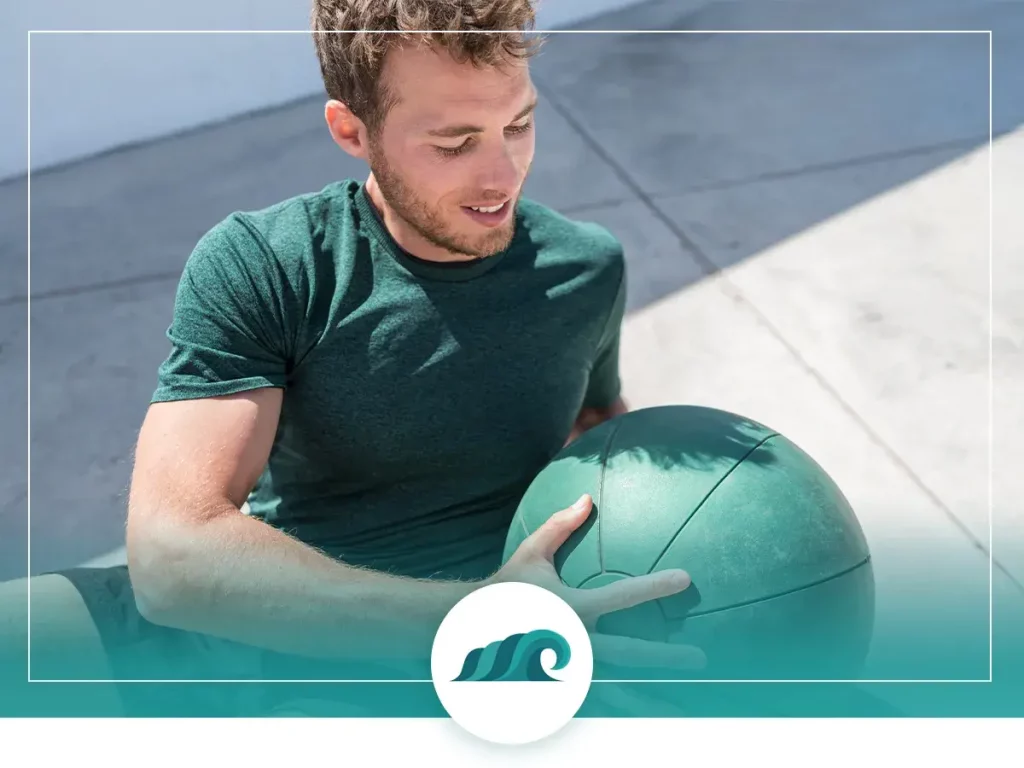
Now that you’re familiar with all the various muscles used while canoeing, you’ll need to know how to exercise them to keep them strong and healthy. Paddling is a great way to stay and get into shape, but like any other repetitive movement, you’ll want to avoid overuse injuries.
There are several exercises you can do that are specifically focused on building and maintaining your paddling muscles. Most of these can be done at home with a little basic equipment, so there’s no need to get a gym membership if you don’t want to.
1) Medicine Ball Trunk Twist
This is a great canoeing exercise for all fitness levels that targets the entire trunk. It mimics the twisting motion utilized in paddling, making it a good training exercise during the offseason.
To perform the trunk twist, start with your butt on the ground and your legs bent and heels slightly off the ground. You want to create a V-shape between your torso and thighs.
Grip a weighted medicine ball with your hands out slightly in front of your chest. Then rotate your trunk from one side to another, making sure to focus on keeping your lower back tight and chest puffed out.
This exercise hits your entire midsection, including your obliques, abdominals, and lower back.
2) Deadlifts
Deadlifts are one of the best – if not the best – full-body workout for your body. They hit the entire posterior chain (back, glutes, hamstrings, and traps). Strengthening these muscles will help increase your power and endurance while paddling, increase your overall fitness level, and help prevent injury to your back as well.
Deadlifts can be performed with a barbell, dumbbells, kettlebells, and even rubber resistance bands.
To perform a basic deadlift:
- Start standing with your feet slightly less than shoulder-width apart and a slight bend in the knees.
- Hinge forward at the hips as low as you can, so you feel your hamstrings.
- Grab the barbell/dumbbell/kettlebell and stand up straight to return to the starting position.
- It’s important to keep your lower back straight and core tight throughout the movement, as improper form can injure the lower back.
Check out this video for one of the best in-depth tutorials on how to perform a deadlift:
3) Woodchopper
This exercise could have been tailor-made for canoeing. It’s a functional exercise that mimics chopping wood and translates well into a wide variety of sports and activities.
You can perform the exercise using a weighted medicine ball, a dumbbell, or a cable machine at the gym.
To begin, start with your feet shoulder-width apart and slightly turned to the outside. Bend your knees so your thighs are parallel to the ground, and grip a dumbbell on the outside of your left leg. Lift the weight diagonally across your body, ending with it twisted to the right above your head. Remember to keep your core tight and control the weight throughout the entire motion.

